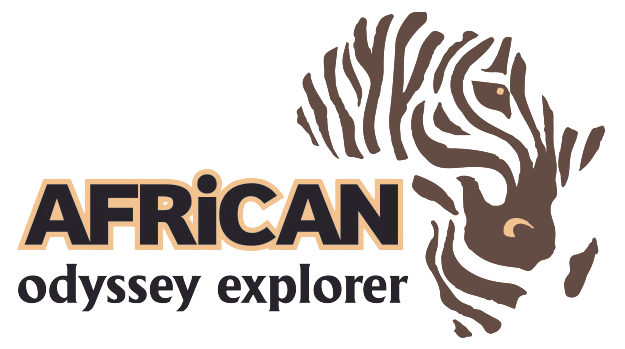AFRICAN ODYSSEY EXPLORER LIMITED is dedicated to providing safe, secure, and enjoyable safari experiences. To achieve this, we have established a comprehensive Risk Mitigation Policy aimed at identifying, assessing, and managing risks that could impact our clients, staff, operations, and the environment. This policy outlines our approach to risk management, detailing the procedures and practices we employ to minimize potential risks.
Objectives
- To ensure the safety and security of our clients, employees, and partners.
- To protect the natural environments and wildlife in the areas we operate.
- To safeguard the reputation and operational integrity of AFRICAN ODYSSEY EXPLORER LIMITED.
- To ensure compliance with all relevant legal and regulatory requirements.
- To promote a culture of risk awareness and proactive risk management.
Core Principles
- Proactive Identification and Assessment of Risks:
- Regularly identify potential risks associated with our operations.
- Assess the likelihood and impact of identified risks.
- Prioritize risks based on their potential impact on safety, security, and business continuity.
- Implementation of Risk Mitigation Strategies:
- Develop and implement strategies to mitigate identified risks.
- Ensure all employees and partners are trained in risk management practices.
- Regularly review and update risk mitigation strategies to address evolving threats.
- Effective Communication and Reporting:
- Maintain clear communication channels for reporting and managing risks.
- Ensure transparency in risk management processes and decisions.
- Encourage a culture of openness and accountability in reporting potential risks.
- Continuous Monitoring and Improvement:
- Regularly monitor the effectiveness of risk mitigation strategies.
- Conduct audits and reviews to identify areas for improvement.
- Adapt and improve risk management practices based on feedback and lessons learned.
Risk Identification and Assessment
- Risk Identification:
- Conduct regular risk assessments covering all aspects of our operations.
- Identify potential risks related to health and safety, security, environmental impact, operational continuity, and legal compliance.
- Engage stakeholders, including employees, clients, local communities, and partners, in identifying potential risks.
- Risk Assessment:
- Evaluate the likelihood and potential impact of identified risks.
- Use a standardized risk assessment matrix to categorize risks.
- Prioritize risks based on their severity and potential impact on our operations and stakeholders.
Risk Mitigation Strategies
- Health and Safety:
- Implement comprehensive health and safety protocols for all safari activities.
- Provide safety training for all employees and clients.
- Ensure all equipment and vehicles are regularly inspected and maintained.
- Develop emergency response plans for potential health and safety incidents.
- Security:
- Conduct security assessments for all safari destinations and routes.
- Collaborate with local authorities and security services to ensure the safety of our clients and staff.
- Implement security protocols for transportation, accommodation, and safari activities.
- Provide security briefings and guidelines for clients and staff.
- Environmental Protection:
- Develop and implement environmental management plans for all safari operations.
- Promote sustainable practices to minimize our ecological footprint.
- Train employees and clients on responsible environmental behavior.
- Monitor and mitigate the impact of our operations on wildlife and natural habitats.
- Operational Continuity:
- Develop business continuity plans to address potential operational disruptions.
- Identify critical functions and develop contingency plans to ensure continuity.
- Regularly test and update business continuity plans to address evolving threats.
- Maintain backup systems and resources to support critical operations.
- Legal and Regulatory Compliance:
- Ensure compliance with all relevant local, national, and international laws and regulations.
- Regularly review and update our policies and procedures to ensure legal compliance.
- Provide training and resources to employees on legal and regulatory requirements.
- Engage legal experts to advise on compliance issues and risk management strategies.
Communication and Reporting
- Risk Communication:
- Maintain clear and effective communication channels for reporting and managing risks.
- Ensure all employees and partners are aware of their roles and responsibilities in risk management.
- Provide regular updates on risk management activities and outcomes.
- Encourage a culture of openness and accountability in reporting potential risks.
- Incident Reporting:
- Establish a standardized incident reporting system for all employees and clients.
- Ensure timely and accurate reporting of incidents and near-misses.
- Conduct thorough investigations of reported incidents to identify root causes and corrective actions.
- Share lessons learned from incidents to prevent future occurrences.
Monitoring and Improvement
- Continuous Monitoring:
- Regularly monitor the effectiveness of risk mitigation strategies.
- Conduct audits and reviews to identify areas for improvement.
- Use key performance indicators (KPIs) to track progress and measure the effectiveness of risk management activities.
- Feedback and Improvement:
- Encourage feedback from employees, clients, and partners on risk management practices.
- Use feedback to identify areas for improvement and enhance risk mitigation strategies.
- Regularly review and update risk management policies and procedures to address evolving threats.
- Training and Development:
- Provide ongoing training and development programs for employees on risk management practices.
- Ensure all employees have the necessary skills and knowledge to effectively manage risks.
- Promote a culture of continuous learning and improvement in risk management.
AFRICAN ODYSSEY EXPLORER LIMITED is committed to maintaining a robust risk management framework that ensures the safety and security of our clients, employees, and operations. By proactively identifying and mitigating risks, we aim to provide exceptional safari experiences while protecting the natural environment and supporting local communities. This Risk Mitigation Policy is a living document and will be regularly reviewed and updated to ensure its relevance and effectiveness in achieving our risk management objectives.


